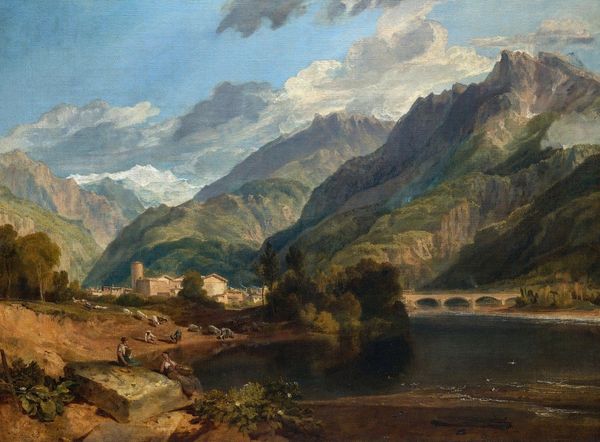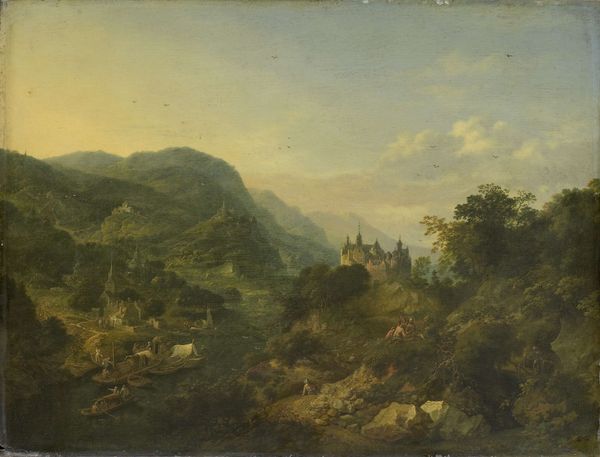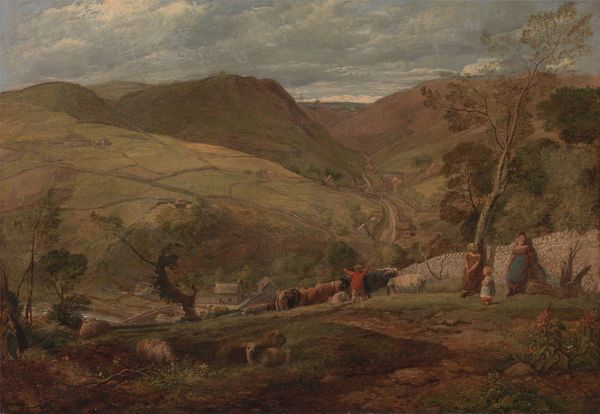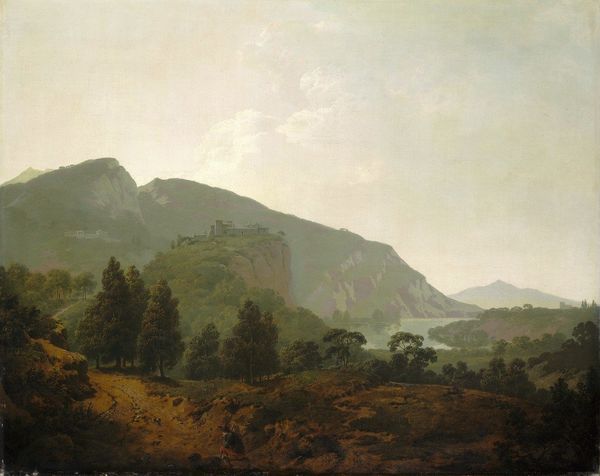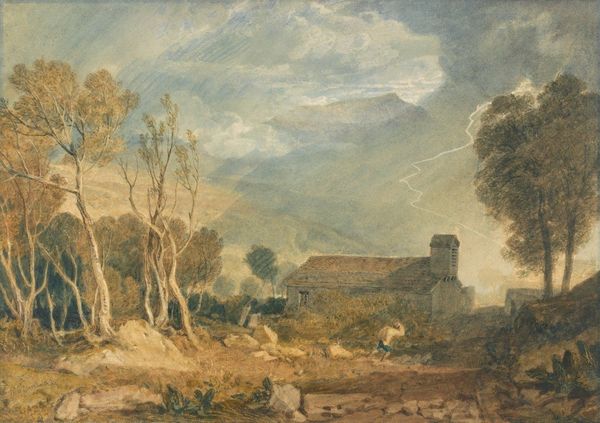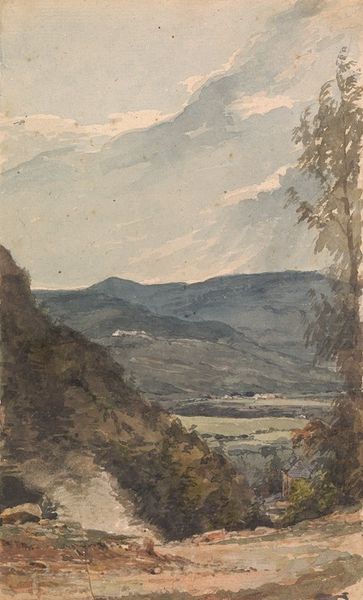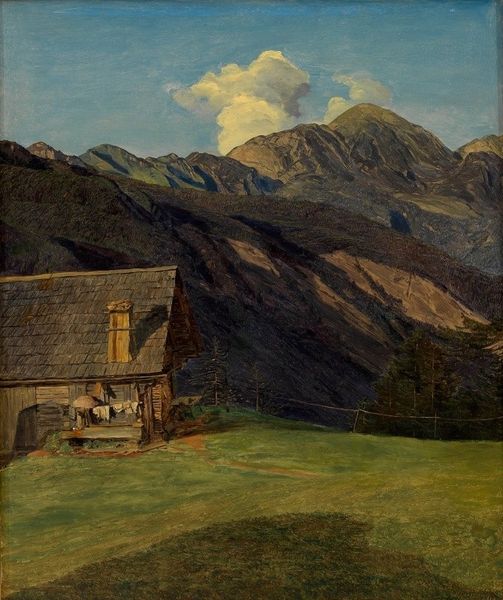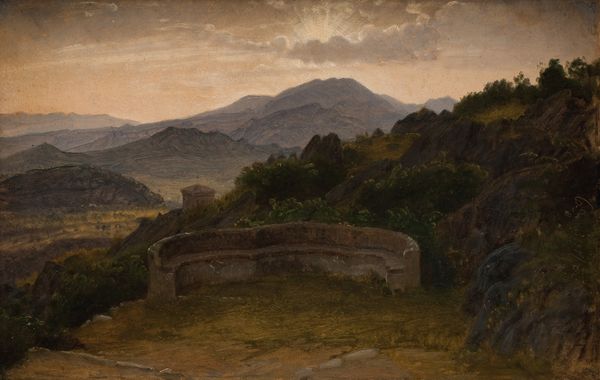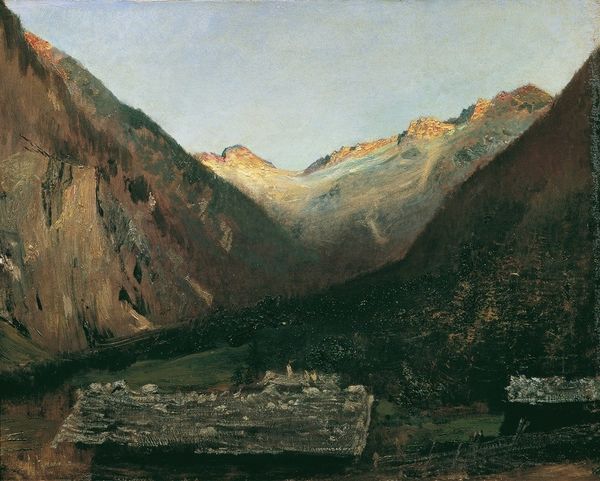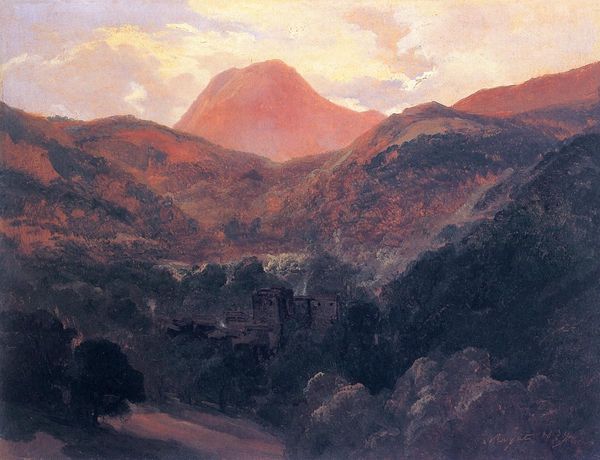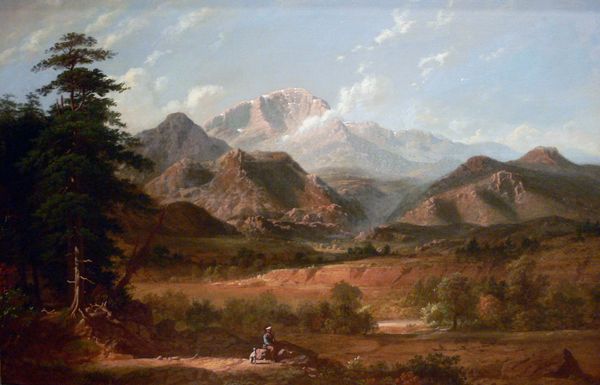
plein-air, oil-paint
#
impressionist painting style
#
plein-air
#
oil-paint
#
landscape
#
charcoal drawing
#
impressionist landscape
#
figuration
#
oil painting
#
underpainting
#
romanticism
#
watercolor
#
realism
Copyright: Public Domain: Artvee
Curator: Here we have J.M.W. Turner's "Chateau de St. Michael, Bonneville, Savoy," painted between 1802 and 1803. Look at that vastness. What's your initial feeling? Editor: Bleak, almost oppressively so. All those earth tones feel so heavy. It looks like there is some architecture, like a bridge of some kind, but I cannot quite put my finger on it. What materials are we dealing with here? Curator: Turner employed oil paint here and seems to have been working en plein air, or outside, directly in response to the environment. Editor: That makes sense, observing nature firsthand would influence the piece. Seeing it, I can almost smell the stone, the earth, that particular shade of ochre ubiquitous in so many medieval paintings, a color of labour and empire. Looking at the landscape, it makes me wonder about those few figures. What are they thinking? Curator: Yes, there's a distinct contrast. The sheer scale of the mountains absolutely dwarfs that lone figure on the road. Notice, too, how Turner uses the tower on the right as a visual anchor to contain the immensity of the nature he captures. Are there any hidden meanings we may be missing? Editor: Absolutely. The castle imagery represents power, resilience, but perhaps also decline. Turner situates a tiny traveler with us and nature. I suspect he is to convey the ephemerality of the human condition within the monumental cycle of nature and time, especially relevant amidst the changes brought about by industrialization. What of that figure? It almost fades into the rest of the canvas. Curator: Perhaps Turner meant for us to consider labor, to witness its placement and relation to landscape in a shifting social terrain. It speaks of Romanticism's concern with the human condition versus progress. The work of painters in general certainly underwent changes around this time! Editor: So the human becomes merely another material within the landscape. Curator: Exactly. That perspective gives one a lot to reflect on. I'm left thinking about how Turner successfully created an intersection of the human element alongside something ageless. Editor: Yes, for me, it highlights our yearning to imprint ourselves on a world that inevitably outlasts us. A memento mori etched in oil paint and rock.
Comments
No comments
Be the first to comment and join the conversation on the ultimate creative platform.
